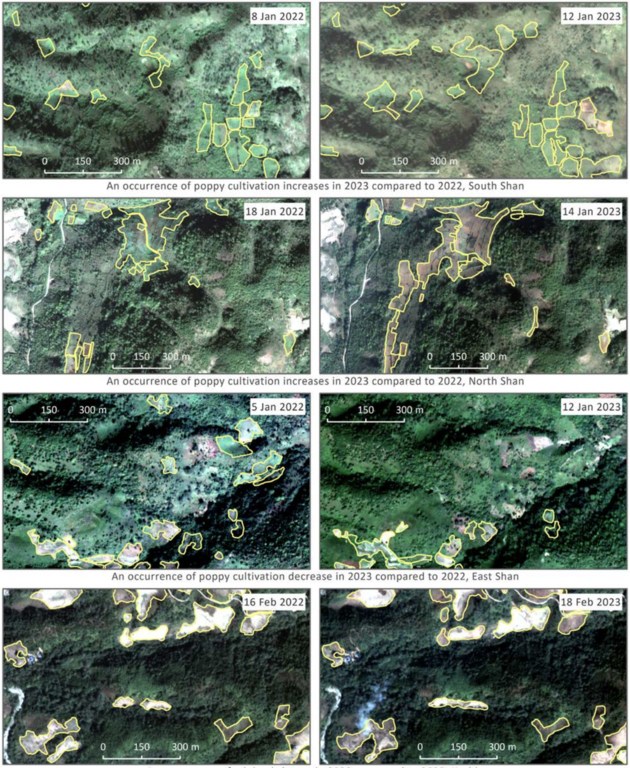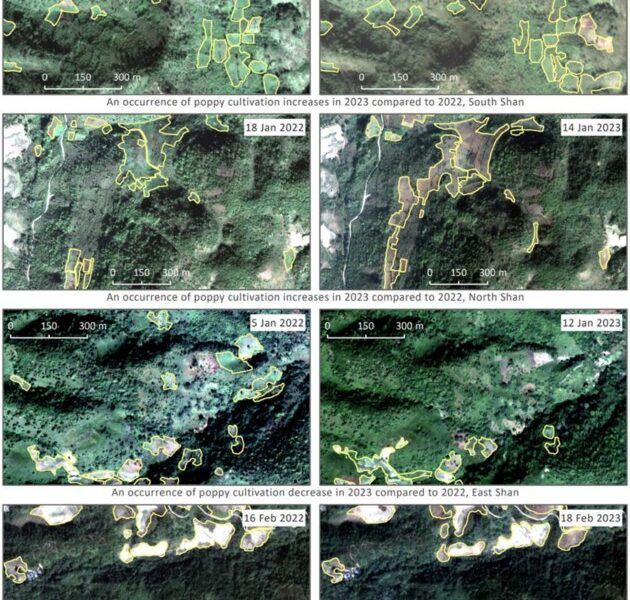Myanmar has surpassed Afghanistan to become the leading producer of opium in the world.
According to UNODC, the production of opium in a Southeast Asian nation has exceeded that of Afghanistan. This is due to the Taliban’s ban on opium production in April of last year, which resulted in a 95% decrease in cultivation.
This year, the estimated area used for growing opium is 47,100 hectares, which is an increase from 40,100 hectares last year. The estimated yield is also expected to rise, with a projected 1,080 metric tonnes, a 36 percent increase from the previous estimate of 2022.
Trend accelerating
Jeremy Douglas, the UNODC Regional Representative located in Bangkok, stated that the military takeover in February 2021 has caused economic, security, and governance disturbances, leading farmers in distant regions to turn to opium as a means of livelihood.
He stated that the escalation of conflict in Shan and other border regions is predicted to hasten this pattern.
In October, a conflict broke out between the junta and a coalition of well-armed ethnic groups. The National Unity Government (NUG), formed by members of the former parliament, has gained support from these groups and the conflict has now spread to more than two-thirds of the country. The military has reportedly lost control of important cities.

The variation in the size of opium cultivation from 2022 to 2023
Please click on the link to access the report.
More sophisticated farming
According to UNODC, the largest rises were documented in Shan state, located in the Golden Triangle, known as a major center for the production and trafficking of drugs.
The growth of crops in that area rose by 20%, while in Chin and Kachin states – which are adjacent to India – it increased by 10% and 6%, respectively.
The Office reported that the average projected opium production increased to 22.9 kilograms per hectare, surpassing the previous record of 19.8 kg/ha set in 2022. This is due to advancements in farming methods and increased use of irrigation systems and fertilizers by both farmers and buyers.
Fuelling other crimes
The increase in opium farming is supporting a rising illegal market in the Mekong area, combining extensive production of synthetic drugs and the trafficking of drugs, as well as activities such as money laundering, online casinos, and fraudulent operations.
Mr. Douglas stated that the issues of crime and governance in the region are made more difficult by the ongoing crisis in Myanmar. He believes that Southeast Asia must unite in order to address both traditional and new challenges facing the region.
The UNODC observed that addressing challenges within the country must take into account the intricate circumstances and susceptibilities of those residing in opium-growing regions.
The organization collaborates with farmers and communities to enhance socio-economic circumstances for sustained income growth, aiding in the development of resilience to conflict and economic interruptions.
Source: news.un.org




